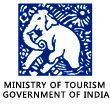Honor the ancient Buddhist origins of all mindfulness teachings as you retrace the path of the Buddha’s life through northern India. Join members of your MMTCP alumni sangha on a transformative journey that will allow you to touch an ancient and diverse culture and civilization. Experience the life of the Buddha through the places he lived, meditated, and taught. This pilgrimage is an unforgettable opportunity to explore areas that few tourists visit and to experience aspects of contemporary Indian life that, in many ways, have not changed since the time of the Buddha. Along the way, you’ll deepen your understanding of the depth and breadth of your mindfulness lineage in ways that will enrich you both as a practitioner and teacher.
This trip is open to MMTCP graduates, teachers, and mentors (past and present). You are also welcome to invite a partner, family member, or close friend to accompany you. This unique learning experience will be enhanced by doing it with other MMTCP affiliated members.
Your guide will be Dharmacharya Shantum Seth, an ordained dharma teacher in the Zen Buddhist lineage of Thich Nhat Hanh and the founder of the Jamun Village Mindfulness Practice Centre in northern India. Shantum has been leading pilgrimages since 1988 and is the foremost expert on sites associated with the Buddha. At each pilgrimage site along the way, Shantum will tell stories of the Buddha’s life and offer teachings to help understand the Buddha as a human being, the drama of his life and the significance of what he taught. Accompanying Shantum will be MMTCP guiding teacher and mentor Anne Cushman, author of the India pilgrimage guide From Here to Nirvana, who will help bridge this journey with your MMTCP experience.
Your pilgrimage will include the Buddha’s birthplace in Lumbini; the palace of Kapilavastu, where he spent his childhood; the Mahakala Cave, where he practiced austerities; Bodh Gaya, where he attained enlightenment; the Deer Park at Sarnath, where he gave his first teachings; his favorite places for meditation and teachings, such as Vulture Peak and the Jeta Grove; and Kushinagara, where he passed away. In addition to the places where the Buddha lived and taught, we will visit monasteries, temples and shrines and visit the homes of both the homes of the poor and the privileged to get a sense of contemporary India. Those who wish can add on extra days for visits to the Taj Mahal and the phenomenal ancient rock-cut Buddhist caves of Ajanta and Ellora, all UNESCO world heritage sites.
The schedule will include time for daily sitting and walking meditation, regular discussions, and contemplative time for yourself. The creation of a traveling sangha will be an important aspect of this trip, giving the journey a greater cohesiveness and building a sense of support for those seeking to deepen their practice.
• ITINERARY
• PLACES TO VISIT
• TEACHER BIOGRAPHY
• COSTS
• REGISTRATION
• IMPORTANT TRAVEL INFORMATION
 .
. 